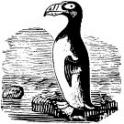Toboggan
Look out below
Dear Word Detective: My friends at college comprise a fairly diverse group, U.S. region-wise, and so we’ve had the requisite “soda vs. pop” arguments, and commented on the strange speaking habits of those of our number from the West Coast (“Hella”? Really?). But probably the most bizarre thing we’ve come across is that the guy from West Virginia calls a knit hat worn in the wintertime a “toboggan.” The rest of us agree that a “toboggan” is a sled. So we were wondering if you could enlighten us: where in the world did this other use of the word come from? — Andrea.

Not amused.
Perhaps from certain people sliding downhill on their heads? Honestly, I don’t know why it’s so hard for some places to get simple terminology right. I definitely need to note this “toboggan” nonsense in my next book on regional linguistic confusion, provisionally titled “Don’t You Dare Call that Stuff Pizza” (a sequel to my best-selling “No, Virginia, That is Not a Bagel”).
Just kidding, of course. Regional variations in language are the soul of American English (and keep people like me in business). Incidentally, “hella” (probably a cropping of either “helluva” or “hellacious”) is slang meaning “extremely” (“Going hella fast”) or “lots of” (Hella cats you’ve got”), first appeared in the late 1980s, and is usually considered native to Northern California, although the earliest print citation for it in the Oxford English Dictionary is from a newspaper in Toronto. Go, as they say, figure.
I actually almost explained “toboggan” in the sense you mention a few years ago, but I ran out of room in that column. I was grappling with the fact that what I and many others had for years been calling a “watch cap” is now evidently known as a “beanie.” A “watch cap,” of course, is a close-fitting knitted cap, often made of wool, originally worn by sailors in the US Navy while “on watch” (posted on deck) in cold weather. A “beanie,” until recently, was a much lighter skullcap, sometimes sporting a small propeller on top, often worn by small children in the 1930s and 40s. Sometime in the 1990s, however, skateboarding fans decided that a “beanie” was any sort of knitted cap, even if made of thick wool, and the rest of the world obediently fell in line. Go figure again.
Compared to “hella” and “beanie,” the transformation of “toboggan” you mention actually makes a fair amount of sense. A “toboggan” is, of course, a simple type of sled, usually consisting of a flat slab of light wood with the forward edge turned up. Modern toboggans can often seat three or more riders, which is nice because then you’re not lonely when you hit that tree. The word “toboggan” is derived from “tobakun,” the Canadian Algonquian Indian word for such sleds, and first appeared in English in the early 19th century. “Toboggan” meaning a knit cap comes from “toboggan cap,” a long woolen hat (essentially an elongated watch cap) considered appropriate headgear while tobogganing in the early 20th century. The use of “toboggan” by itself to mean a woolen cap dates to around 1929, and seems fairly widespread in the US today, often in contexts far from the sledding slopes (“He [a burglar] was wearing a red toboggan and tight pants, police said,” Raleigh (NC) News & Observer, 1975).
Page 1 of 2 | Next page
